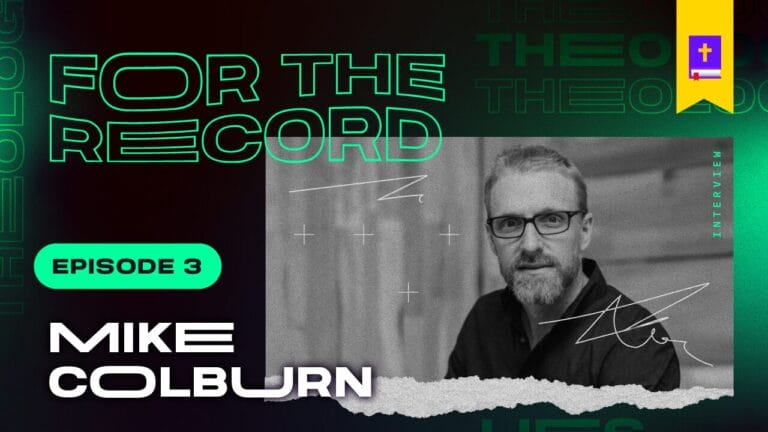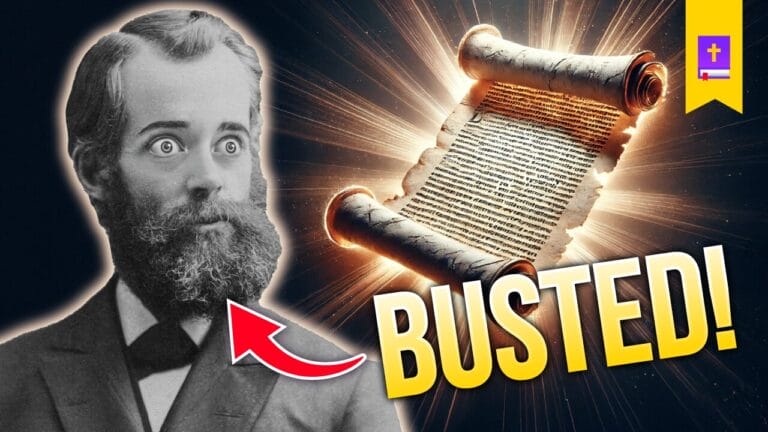The correct understanding of the ministration in the heavenly sanctuary is the foundation of our faith.
Ellen G. White, Christ In His Sanctuary, pg. 5 (CIHS 5.4)
The Adventist Church bases much of its theological framework on its interpretation of the Old Testament sanctuary system. As Ellen White stated, the sanctuary doctrine serves as the foundation of Adventist theology. Many, including former Seventh-day Adventists, fail to recognize that the concept of the sanctuary within Adventism is much more than a single doctrinal belief; it is a comprehensive worldview that integrates all of the Adventist doctrines into a unified system. It could rightly be called the sanctuary plan of salvation because it serves as the Adventist explanation for how God is resolving the sin problem.
In essence, it is a typological framework that they claim outlines God’s plan for humanity’s redemption and that this plan was symbolized by the services of the Old Testament sanctuary. They view this model as a detailed representation of redemptive history, culminating in Christ’s high priestly ministry, the investigative judgment, and the Second Coming. Each step of this process is seen as a typological fulfillment of the Old Testament sanctuary services, forming a seven-step journey that Jesus is believed to be walking out in and believers are encouraged to “follow Him through the sanctuary.”
Many people are familiar (even if vaguely) with the unique Seventh-day Adventist doctrine of the investigative judgment, but fewer understand that it is merely one step in their complex and elaborate framework.
Psalm 77:13 KJV in the King James is usually the cited starting point to try and ground this concept in the Bible. They interpret Asaph declaring “thy way O God is in the sanctuary” to mean that we are told the way of salvation is in the sanctuary. In which they engage in word concept fallacy by plugging their 7-Step theory into the word “sanctuary.”
The Model
1. Jesus Comes to Our “Camp”: The Incarnation
The model begins with Jesus coming to our “camp” (e.g. the earth) to dwell among us (John 1:14) and beginning His earthly ministry. They teach that Jesus had to come to develop a perfect character, weaving together a perfect robe of righteousness, to then be able to impute that to sinners.
The law requires righteousness,—a righteous life, a perfect character; and this man has not to give. He cannot meet the claims of God’s holy law. But Christ, coming to the earth as man, lived a holy life, and developed a perfect character. These He offers as a free gift to all who will receive them. His life stands for the life of men. Thus they have remission of sins that are past, through the forbearance of God. More than this, Christ imbues men with the attributes of God. He builds up the human character after the similitude of the divine character, a godly fabric of spiritual strength and beauty. Thus the very righteousness of the law is fulfilled in the believer in Christ. God can “be just, and the justifier of him which believeth in Jesus.” (Romans 3:6)
Ellen G. White, Desire of Ages, pg. 762 (DA 762.2)
Proof-texts appealed to: Exodus 12:5, 25:8; Leviticus 22:20-22; Matthew 1:23; John 1:14
2. The Outer Court: The Altar of Sacrifice
They believe that over 30 years of life, Jesus “wove” a robe of righteousness developing that perfect character. With this completed, He began His earthly ministry in the “outer court” of the sanctuary, where the altar of burnt offering and the laver were located (Exodus 27:1-8; 30:17-21). After living a perfect life, the Father placed the sins of the world upon Him, causing Him to experience the agony of the second death that sinners deserve. They regard his death on the cross as the foundational act and starting point in the process of salvation, providing atonement for humanity’s sins.
Proof-texts appealed to: Isaiah 53:5-6; John 3:16; Galatians 3:13; 2 Corinthians 5:21; Hebrews 2:9
3. Jesus In the Court: The Laver
Since the laver was positioned between the altar of sacrifice (symbolizing Calvary) and the holy place of the sanctuary (representing step 4 in their interpretation), they argue that the laver must symbolize an event that occurred between Jesus’ death on the cross and the beginning of His high priestly ministry in the heavenly holy place after His ascension.
They assert that in the Old Testament, after the priest offered a sacrifice on the altar, his garments were stained by the defilement of death. Similarly, they claim that before Jesus could act as a high priest and apply the blood of His sacrifice in the heavenly holy place, He needed to cleanse Himself of the defilement of death. They believe this was accomplished through His resurrection.
Thus, in this model, the baptism of the believer is seen to be a picture of this in which a person goes into the baptismal waters, their sins are washed away, resurrecting them to newness of life (see Acts 22:16).
Proof-texts appealed to: Romans 4:25, 6:9-10; 1 Corinthians 15:3-7; Titus 3:4-5
4. Jesus’s Work in the Heavenly Holy Place
The next step takes place in the holy place of the heavenly sanctuary which they claim Jesus entered at His ascension after the resurrection. The holy place housed the table of showbread, the golden lampstand, and the altar of incense (Exodus 25:23-40; 30:1-10). For the believer, they see these as symbols of key aspects of one’s daily walk with God.
- Table of Showbread: The Word of God (Matthew 4:4).
- Golden Lampstand: The Holy Spirit’s illumination and guidance (John 8:12).
- Altar of Incense: The prayers of the saints ascending to God (Revelation 8:3-4).
From Christ’s ascension until October 22, 1844, they claim that He was in the holy place apartment of a sanctuary building in heaven doing an analogous work to that of the priests on earth:
In the service of the earthly sanctuary, which, as we have seen, is a figure of the service in the heavenly, when the high priest on the Day of Atonement entered the most holy place, the ministration in the first apartment ceased. God commanded: “There shall be no man in the tabernacle of the congregation when he goeth in to make an atonement in the holy place, until he comes out.” Leviticus 16:17. So when Christ entered the holy of holies to perform the closing work of the atonement, He ceased His ministration in the first apartment. But when the ministration in the first apartment ended, the ministration in the second apartment began. When in the typical service the high priest left the holy on the Day of Atonement, he went in before God to present the blood of the sin offering in behalf of all Israel who truly repented of their sins. So Christ had only completed one part of His work as our intercessor, to enter upon another portion of the work, and He still pleaded His blood before the Father in behalf of sinners.
Ellen G. White, The Great Controversy, pg. 428 (GC 428.3)
Proof-texts appealed to: Acts 2:38, 5:31, 10:43; Romans 8:31-34; Hebrews 7:25; 1 John 1:9, 2:1-2
5. The Most Holy Place: The Investigative Judgment
On October 22, 1844, they then claim that Jesus moved from the heavenly holy place into the most holy to begin the investigative, or pre-advent, judgment—what they call a “second phase” of Jesus’s heavenly ministry. They reason that during the earthly sanctuary service, the priest would transfer sin from the sinner to the victim and then to the sanctuary, which defiled it, resulting in it needing to be cleansed on the Day of Atonement. We have shown how this is badly flawed here and here.
Nevertheless, they propose that the investigative judgment involves Christ reviewing the records of all professed believers from Adam to the present day to determine who is “fit for heaven” and shown to be “entitled to the benefits of His sacrifice.” The wicked, in this model, are not judged before the Second Coming because their judgment will take place during the 1000 year Millennium.
This phase is seen as necessary to prepare the universe for the final eradication of sin and the clearing of God’s name from accusations of Satan.
It’s vitally important to understand that when the SDA Church uses the word “atonement,” they are actually referring to the investigative judgment:
One of the most debated topics of Christian theology is expressed in these questions: Why the cross? What really happened at the cross? The answers to these questions have been widely debated under the general heading of the atonement. But when Seventh-Day Adventists (SDA) approach the matter of atonement, an immediate dilemma is perceived. When Adventists talk about atonement, they refer specifically to what Jesus is doing now in the heavenly sanctuary. On the other hand, when scholars outside the Seventh-Day Adventist Church discuss the atonement, they refer specifically to the cross of Jesus Christ and what God was doing there.
Dr. Jon Paulien, Salvation: Contours of Adventist Soteriology, pg. 189
For the Adventist who is “following Jesus through the sanctuary,” they see this as a special time of putting away sin before the close of probation:
Those who are living upon the earth when the intercession of Christ shall cease in the sanctuary above are to stand in the sight of a holy God without a mediator. Their robes must be spotless, their characters must be purified from sin by the blood of sprinkling. Through the grace of God and their own diligent effort they must be conquerors in the battle with evil. While the investigative judgment is going forward in heaven, while the sins of penitent believers are being removed from the sanctuary, there is to be a special work of purification, of putting away of sin, among God’s people upon earth. This work is more clearly presented in the messages of Revelation 14.
Ellen G. White, Christ In His Sanctuary, pg. 153 (CIHS 153.1)
This is the step they theorize Jesus is currently conducting and will cease at an unknown time to move to the sixth step.
Proof-texts appealed to: Daniel 8:14; Hebrews 9:23
6. The Scapegoat: Ceremony at the Door of the Sanctuary
After the investigative judgment is complete, they say Jesus will move to the Scapegoat ceremony which was conducted at the door of the sanctuary. In Leviticus 16, the Day of Atonement included the ritual of the scapegoat (Azazel), which Adventists interpret as representing Satan. After Jesus transfers the sins of the righteous from the sanctuary to Satan, they assert that God will exile Satan to a desolate and non-inhabited planet for one thousand years after which God will destroy him along with his angels and his followers in the lake of fire.
They try and make a connection here between Leviticus 16 and Revelation 20:1-3 claiming that Satan is thrown “off the mountain” down into the Lake of Fire like the scapegoat was traditionally said to be taken outside of the camp and thrown off a cliff (something scripture doesn’t say, but certain Jewish traditions hold). Since the Bible doesn’t say this, you’ll often hear them cite the book of Enoch in which they claim a picture of this is seen.
Nevertheless, this is to say that they teach that Jesus utilizes Satan in an “accommodating sense” to accomplish atonement and the eradication of sin from the universe:
If Azazel represents Satan, how can scripture connect him with the atonement? As the high priest, after having cleansed the sanctuary, placed the sins on Azazel, who was forever removed from God’s people, so Christ, after having cleansed the heavenly sanctuary, will place the confessed and forgiven sins of His people on Satan, who will then be forever removed from the saved. [Begin SDA Bible Commentary] “How fitting that the closing act of the drama of God’s dealings with sin should be a returning upon the head of Satan of all the sin and guilt that, issuing from him originally, once brought such tragedy to the lives of those now freed of sin by Christ’s atoning blood. Thus the cycle is completed, the drama ended. Only when Satan, the instigator of all sin, is finally removed can it truly be said that sin is forever blotted out of God’s universe. In this accommodated sense we may understand that the scapegoat has a part in the ‘atonement’ (Lev. 16:10). With the righteous saved, the wicked ‘cut off’, and Satan no more, then, not till then, will the universe be in a state of perfect harmony as it was originally before sin entered.”
Seventh-day Adventists Believe, pg. 369
For them, the scapegoat ritual highlights the eventual responsibility of Satan for the sin he instigated being placed upon him. Leviticus 16 says nothing about the scapegoat representing responsibility. This is coming from Ellen G. White.
This step also includes the second and third phases of their understanding of judgment. The first phase is the investigative judgment, followed by the millennial reign judgment, and then the post-millennial reign judgment. They believe that during the 1,000-year reign, the earth will be desolate, and Satan will be bound with no one to tempt. Meanwhile, in heaven, those who passed the investigative judgment will be reviewing the books of record from both the investigative judgement, as well as those of the wicked, to confirm God’s fairness.
They also claim that this will be a time for believers to receive answers about why certain individuals are not in heaven. This review process, they argue, will demonstrate God’s justice before He carries out the final judgment on the wicked at the second resurrection.
Proof-texts appealed to: Leviticus 16:7, 20-22
7. Jesus Returns to Our Camp Permanently
The final step in the model is the new heavens and the new earth where God will dwell with His people forever (Revelation 21:1-4). After the millennium, they claim that Satan and the unrighteous will surround the camp of the saints and God will destroy them with fire which will eradicate sin from the universe forever.
This corresponds to the ultimate fulfillment of God’s plan for humanity to be free from sin and its consequences. The new earth represents the ultimate reconciliation of humanity and creation with God, fulfilling the promise of complete salvation.
Proof-texts appealed to: Revelation 21:2-4
Conclusion
While this model provides a structured narrative of salvation, appealing to biblical proof-texts along the way, it breaks down on numerous levels:
- Unbiblical Foundations: The investigative judgment, and specifically the date of October 22, 1844, lack clear biblical support and rely entirely upon the Adventist misinterpretation of Daniel 8:14 and other prophetic passages.
- Poor Hermeneutics: The theory rests entirely upon typology and the assistance of Ellen White’s extra-biblical writings, making the model a package deal. It goes to show how typology can be dangerous if abused and why it should not be the foundation for how we arrive at fundamental, biblical doctrine; especially one of this magnitude.
- Novel to the 19th-Century: This model presents a soteriological framework and understanding of salvation that wasn’t known by anyone outside of the Seventh-day Adventists until the 19th-century which should set off serious alarm bells and red flags.
- Undermining the Sufficiency of Christ’s Atonement: The idea that Christ’s atonement includes a “second phase” undermines the biblical teaching of the atonement being complete at the cross (John 19:30; Hebrews 9:26, 10:10–14).
- Misinterpretation of the Scapegoat: Identifying the scapegoat as Satan rather than Christ has been criticized as inconsistent with the broader biblical context, which emphasizes Christ as the ultimate bearer of humanity’s sin.
- Every Link is Necessary: In order for this elaborate hypothesis to be true, every link in a long chain of claims and beliefs must also be true. For example, if sin was put away at the cross, like scripture clearly teaches (Colossians 2:14; Hebrews 9:26), then the SDA theory about Satan being represented by the scapegoat breaks down because there is no sin to be transferred to him—its already been put away by Christ at Calvary. Numerous links in the chain are badly broken and others severely damaged.
- Works-Oriented Soteriology: The imbalanced emphasis on sanctification and obedience in orthodox Adventist theology logically results in sinless perfectionism and ultimately confuses the law and the gospel.
Conclusion
This theory represents a distinctive theological perspective based on the Old Testament sanctuary system and the SDA church’s interpretation of prophecy. While it offers a detailed framework for understanding redemptive history, it raises questions about its biblical basis and alignment with historic Christian orthodoxy. Despite claiming to uphold a “literal” reading of the Bible, this framework relies heavily on typology, inference, and speculation. Notably, the Bible nowhere instructs us to interpret and apply these seven aspects of the earthly sanctuary service in this manner.
For those interested in seriously understanding Adventist theology, one must understand this framework as well as the novel Adventist worldview called the Great Controversy Theme.










